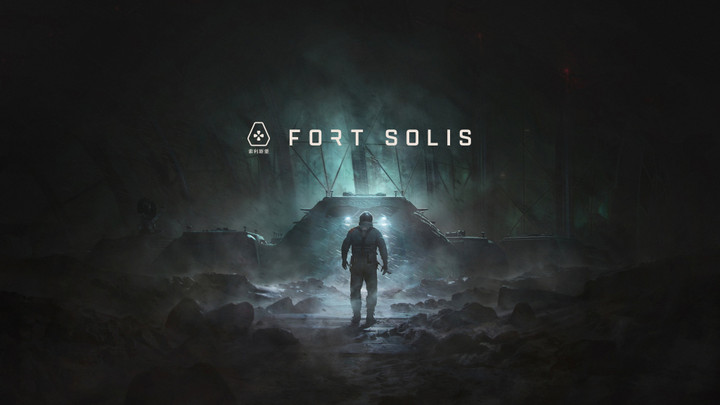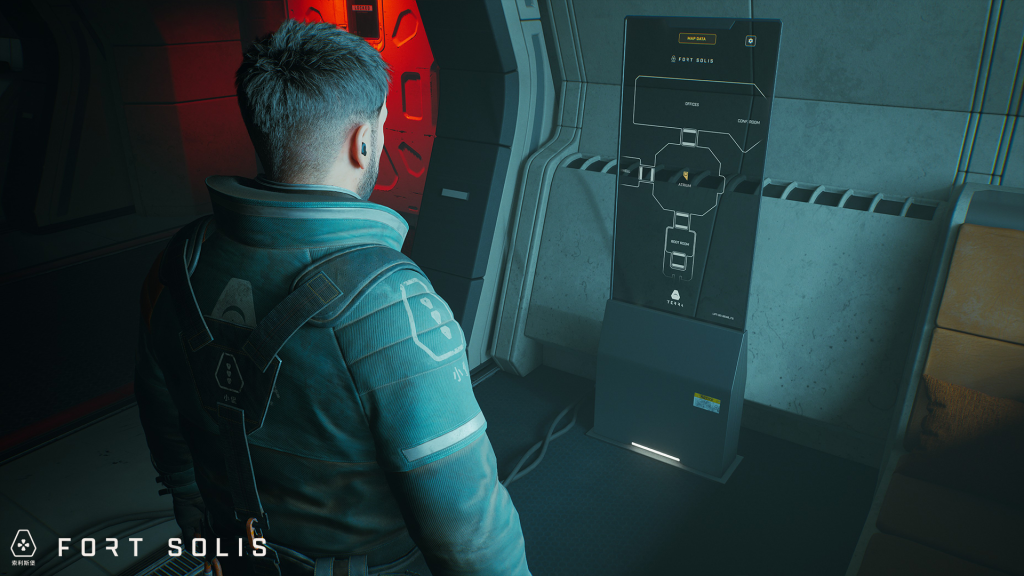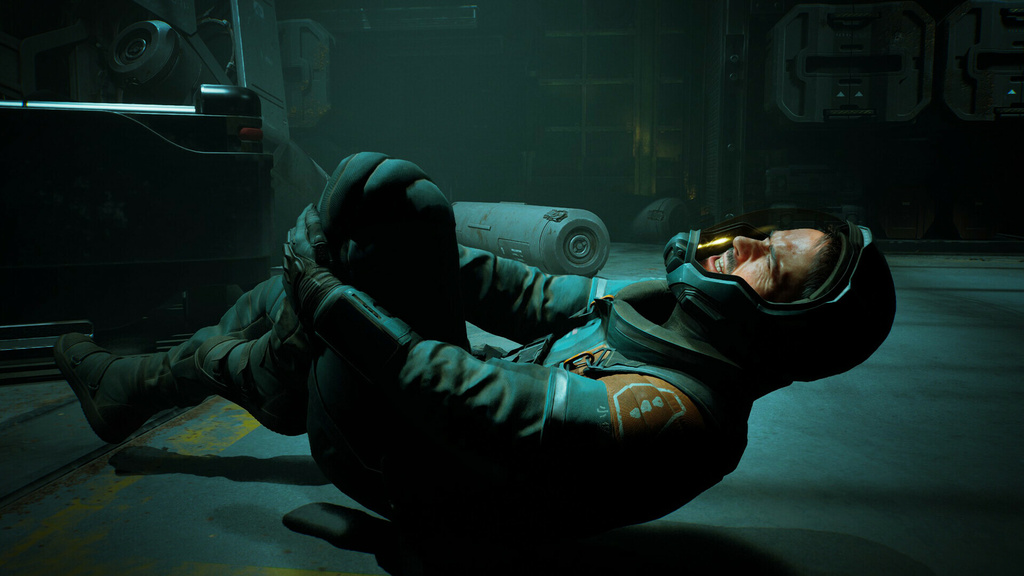Fort Solis is a four hours long thrilling interactive adventure that boasts photo-realistic visuals and an unsurprisingly stellar performance from the three leads - Julia Brown, Roger Clark, and Troy Baker.
It's Clark's first major video game role since portraying Red Dead Redemption 2's Arthur Morgan, and while he's just as endearing as Jack Leary, it's Troy Baker's sinister role as Wyatt Taylor that steals the show.
I was surprised by how quickly I was immersed in Fort Solis' world, thanks to the moment-to-moment banter between Clark and Brown's characters and its slow-paced exploration-based gameplay. While the writing and overall story don't match the potential of its star-studded cast and the game's incredible atmosphere, if you're a fan of these actors or are looking for a short and somewhat intense sci-fi experience while waiting for Starfield, Fort Solis could be worth your time and money.
Fort Solis' World is Captivating & Grounded
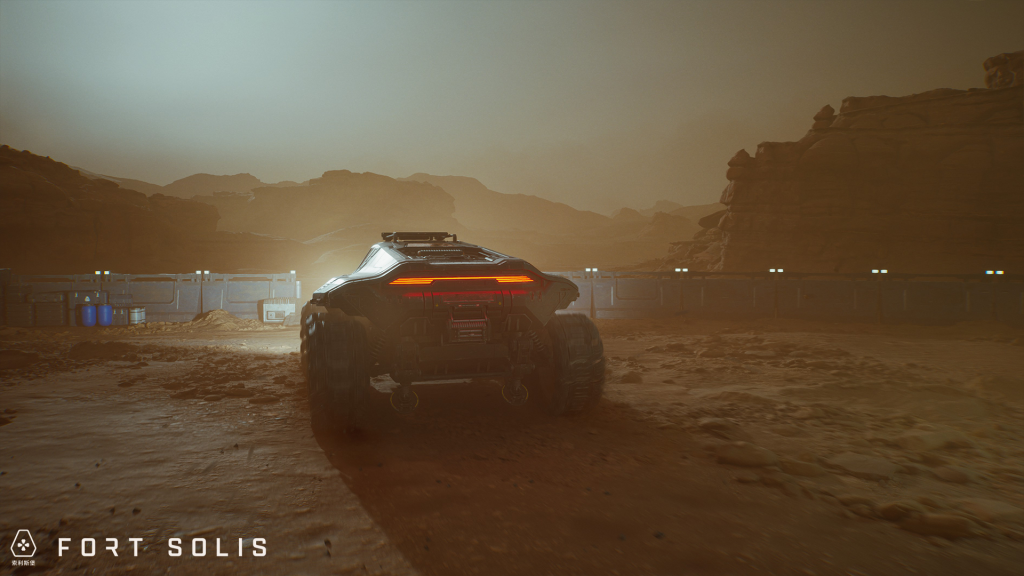
Fort Solis takes place in and around the mining base Fort Solis on the planet Mars. You play as Jack Leary, a Senior Engineer at Fort Minor, who goes to inspect a bizarre alarm call from Fort Solis amidst a brewing storm.
From the get-go, there's an immaculate eerie vibe to the game's atmosphere. Instead of dramatic scores, Fort Solis relies on silence and humming reverberating sounds to build tension. It suits perfectly well with the game's more grounded nature. (More on that later.)
Fort Solis' knows its strengths and flaunts them effortlessly. The opening segment, where Leary drives the LTV to Fort Solis, vaguely reminded me of Blade Runner 2049's opening shot because of the ambiance.
Upon arriving at Fort Solis, Leary notices that the lockdown is in motion, with no one in the area. From here on out, it becomes an investigative journey as Leary explores different parts of Fort Solis to unravel the mystery behind everyone's disappearance.
Fort Solis strives to be a deeply cinematic experience, and for the most part, it succeeds in doing so. The UI is clean, with no HUD to distract you. There's an in-game map, which you can access from the gadget on Leary's wrist, like the Pip-Boy from Fallout.
While the map in itself is useless and joins Remnant 2 as some of the worst map designs of the year, I admired the wrist-built UI. As a fan of Pip-Boy and creative UI options like in the Metro Exodus, I was left thinking, what if future Resident Evil or Dead Space games had similar in-gear built maps for better immersion?
Speaking of Resident Evil and Dead Space, the gameplay in Fort Solis works quite similarly to those games, excluding the combat part. You make your way through different sections of Fort Solis, reading emails and listening to audio logs to piece together the bigger picture. There are also a few code puzzles that are just as dumb to solve as they are in other survival horror titles.
The highlights of Fort Solis, as I mentioned previously, are its stunning visuals, which look great on both PS5's quality and performance mode, and the excellent delivery from its star-studded cast. On that note, I didn't experience any major visual or technical issues on the PS5 version of the game.
You can interact with a wide array of objects while exploring different environments. Picking up things like a Rubik's cube or a beer bottle, in most cases, triggers a dialogue from Clark's character followed by a snappy remark from Brown (who plays Jessica Appleton.) These moments are the best parts of Fort Solis, and I was constantly encouraged to find more such objects, not out of interest but to trigger another conversation between these two characters.
Fort Solis isn't as fancy as Talos-1 or terrifying as USG Ishimura, but it's still fun to explore. The locations that you visit are pretty standard for any sci-fi setting. Areas like the Medical Wing, Crew Quarters, and Greenhouse aren't striking, but I liked exploring them because they fit the game's overall grounded nature.
In Fort Solis, you walk a lot (yes, it's a walking simulator), and it allows you to inspect different environments closely and interact with mundane objects to trigger silly conversations with your partner because there's no one else around. Add to that no prominent background score, and it becomes a very lonely, humane, and sometimes monotonous experience. And that's the beauty of it because that's how it probably feels to explore an actual dilapidated facility on a different planet. It's evident quite early that Fallen Leaf Studios was aiming for more authentic exploration-based gameplay, and it works very well for the most part.
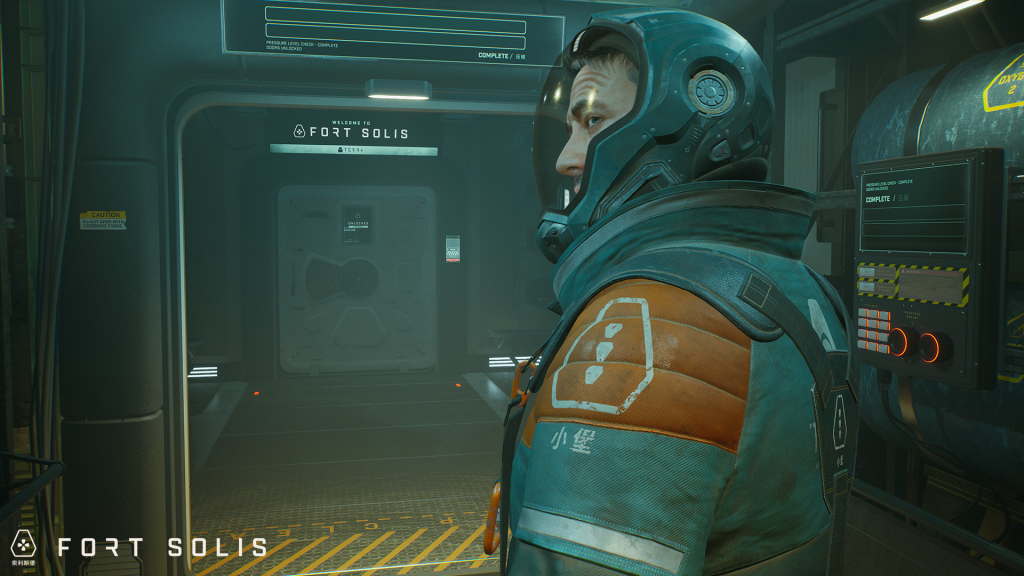
While I was initially disappointed by the lack of an option to run or sprint, the slow-burn exploration eventually grew up on me, thus resulting in an overall engaging experience. Of course, the pacing is a huge factor in these kinds of experiences, and if it weren't for its shorter length, which I thought was perfect, Fort Solis might have eventually become an infuriating experience.
Fort Solis' Story & Writing Don't Match the Potential of Its Star-Studded Cast
Despite impeccable performances from its cast, Fort Solis underdelivers when it comes to its writing and story. The overarching plot leans heavily into the genre tropes surrounding a bunch of researchers who cultivate something devilish that could harm the outside world. However, there's one major twist here, and it involves Troy Baker's character Wyatt Taylor. Revealing anything more would be delving into spoiler territory, but I want to add that Baker is absolutely menacing as Taylor, and some of his deliveries are downright spectacular. As someone who has played almost every Troy Baker game and is familiar with his vocal ranges, I was awestruck by how much different he sounded as Wyatt Taylor.
Clark and Brown are just as incredible, but the game's underwhelming writing meant there wasn't much to deliver. Taylor's lines aren't particularly noteworthy either, and I swear I heard some dialogues more than once.
It isn't all downhill, though, as the deliveries and the facial cues do intensify certain moments in the story. If anything, having a star-studded cast keeps Fort Solis away from the clenches of the B-grade stereotype that's largely common in the horror genre of video games.
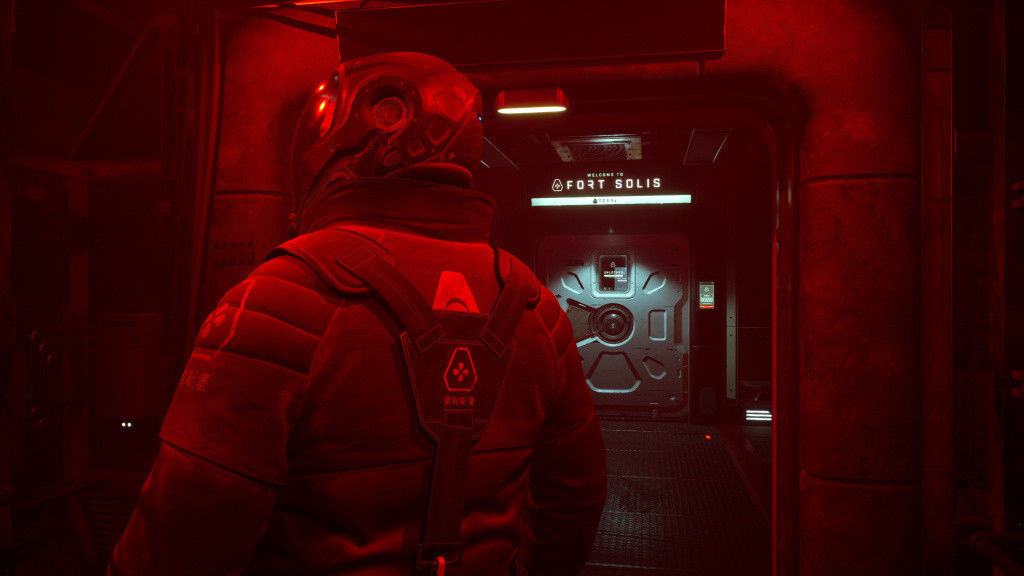
Despite being mostly predictable, there are a handful of moments in the second half of the story that are surprising. However, there isn't much build-up for these moments, so they feel less impactful than they should have. While these twists and turns kept me engaged, even if they felt disjointed, it's hard not to look at the sheer potential of this trio of a cast and think of it as a missed opportunity.
Major narrative beats are almost always followed by QTEs that are quite easy to miss. It's actually hilarious and jarring to see Fallen Leaf Studio implement two of the most disliked gameplay tropes of all time - Walking and QTEs - in Fort Solis and still get away with it.
I didn't mind the QTEs, but there are no consequences for failing them in the story or the game's ending. It feels a little off-putting because the studio claims Fort Solis to be a spiritual successor to games like Until Dawn and The Quarry. As such, it isn't far-fetched to expect a few branching pathways here and there. Sadly, that doesn't happen here, and the QTEs are just here to break the pace.

 No ads, our video library,
No ads, our video library,
